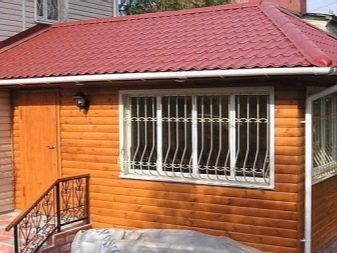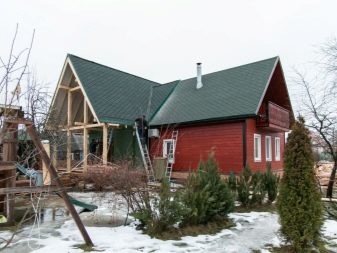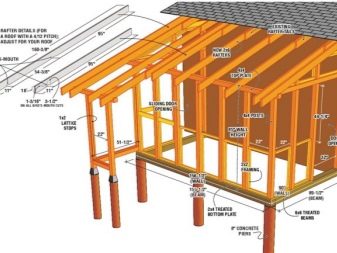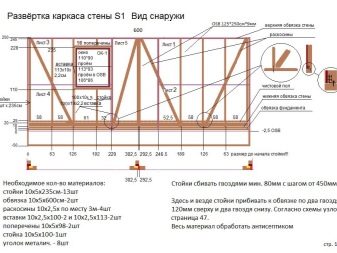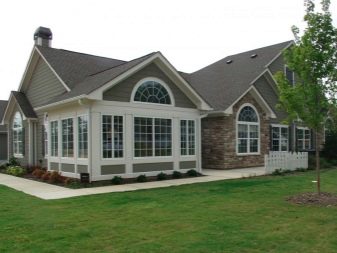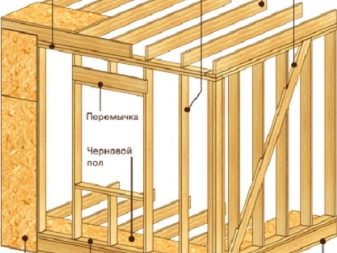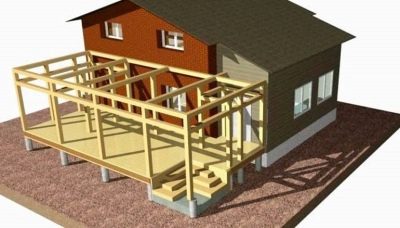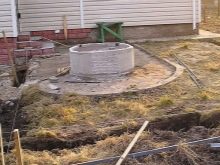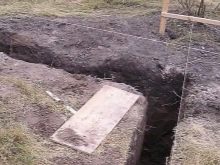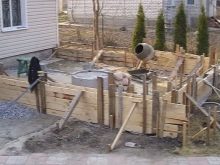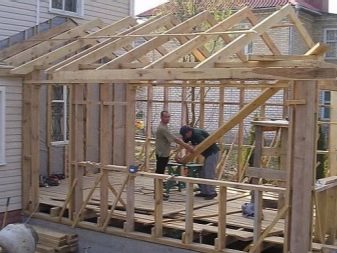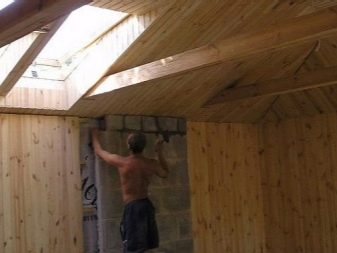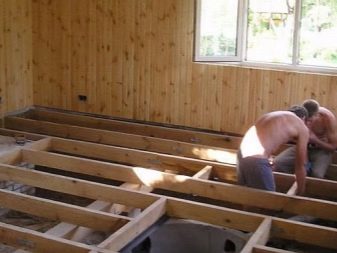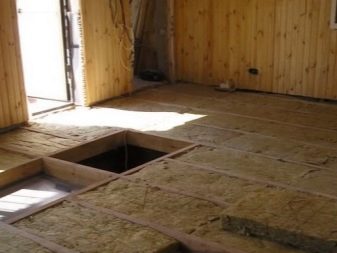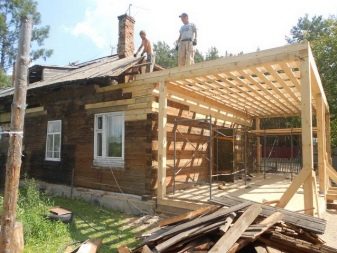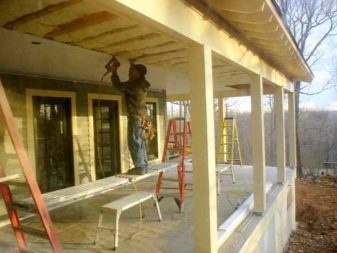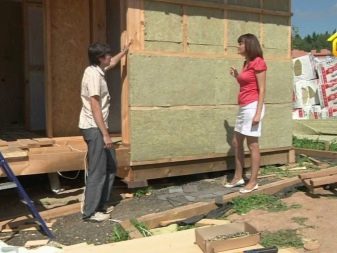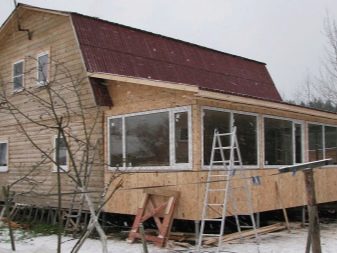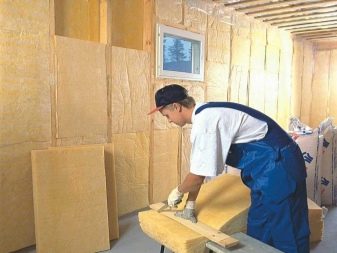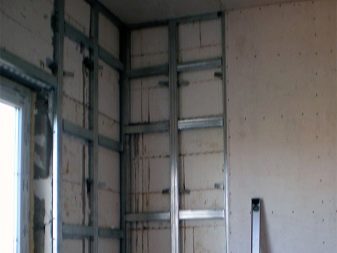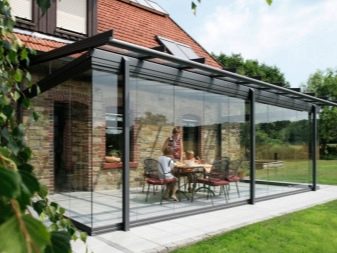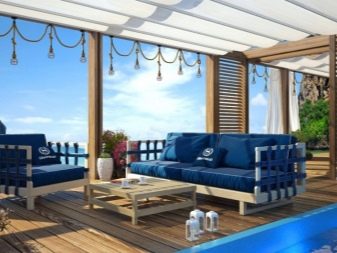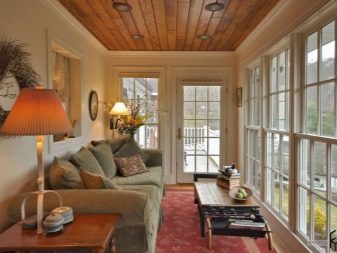How to make a frame extension to the house?
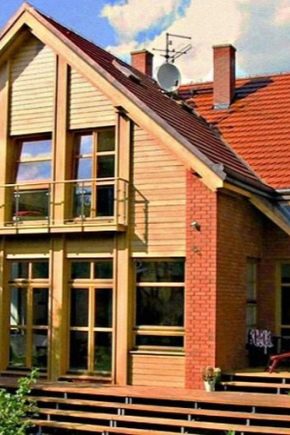
Building a frame extension to a private house is a quick and economical way to increase the area of your home. Nowadays, structures of this type are beginning to be in great demand, since their construction does not require special skills, and building materials can be purchased at any building materials store. If you precisely adhere to the construction technology and correctly calculate each component of the extension, then it will serve for many years without requiring major repairs.
Special features
The extension to the house has its own characteristics, which depend on its purpose, since the kitchen, the veranda, the bathroom and the additional living room have different requirements. In particular, the extension of another dwelling can be compared in complexity with the construction of a small house.
There are special requirements for the foundation, thermal protection of walls, floor and ceiling. With the construction of a summer terrace is much easier, because it is a light unheated structure, for the construction of which there is no need for a strong foundation. In general terms, the design of the terrace is limited to the construction of walls, roof and floor. Although some homeowners prefer a glass veranda. The main thing is that the extension should not stand out from the general style of the house.
Problems arise with the kitchen and bathroom, especially when the water supply system to the house is already connected and it will be necessary to carry out additional communications to the newly-made premises. Problems may begin with the heating system. You should think about communications to the construction of the foundation, so you can save money and time in the future.At worst, you should equip or at least identify the exit points of water and heating pipes. Regardless of what will be attached to the house, this process includes such standard steps as:
- design;
- foundation construction;
- the construction of the wall frame and its lining;
- roofing device.
It turns out that the extension of the additional room to the house with their own hands does not differ from the construction of any other structure. And the strength of the entire structure will be determined by the quality of the foundation.
Projects
Works on the installation of additional premises in the form of an annex include the design procedure, the choice of materials, the preparation of estimates, the distribution of communications, the communication device with the house, the arrangement of space.
Creating a project and drawing, as well as the calculation of the extension to any house (old or newly built, log, summer, shield, brick, wood and others) begins after the type of building and size is determined.
In turn, when choosing an additional room, you can opt for such as: a veranda, a terrace, a summer kitchen, a living room, a garage, a porch, a bay window, and awnings.At the same time it is important to foresee the condition of the adjacent walls and, if necessary, to replace the rotten areas. Must adhere to a single style.
The dimensions of the extension of the frame should not exceed 2/3 of the area of the house. For example, the area of the veranda, as a rule, is approximately 20% of the area of the house. The main thing - do not disturb the exterior of the facade. For changes in the structure of a dwelling house, the permission of the Committee for Architecture and Urban Planning is required. All necessary drawings are prepared.
It is problematic to use ready-made standard projects, since we need to bind to the existing structure of the house and the state of the soil. They are taken as a basis, making changes of varying degrees of complexity depending on the needs of the customer, as a result an extraordinary solution can be obtained.
DIY building
The construction of the frame extension can be implemented by yourself, the main thing is to follow the advice of professionals in this matter. Once ready for a detailed project of the future construction, you can proceed to construction. This process includes several important steps that will be followed by step-by-step instructions.
Site preparation and foundation casting
Before the construction of the frame will need a foundation. It can be lightweight, columnar or tape, but in most cases, as the base choose the tape foundation of the monolithic type, which is the most reliable and durable.
To create the foundation, you should perform such actions as:
- need to mark the plot. In the corners of a future building, you should drive in small pegs, tying a cord (fishing line) to them. This will allow you to clearly see the shape of the future foundation;
- it is necessary to dig a trench (ditch). Its depth depends on the dimensions of the base of the main house. The trench width should be 150–170 mm larger than the future extension walls;
- the bottom should be covered with fine gravel or sand with a layer of up to 15 cm, carefully tamping it down;
- directly on a cushion of rubble or sand, you must put a layer of waterproofing;
- on top of the waterproofing layer you need to arrange a reinforcing mesh to increase the strength of concrete;
- you need to fill the reinforcement layer with 1/3 of the concrete solution, wait until the mortar sets, and then pour another mortar at 1/2 the depth of the ditch;
- formwork should be installed.As a material for creating forms for laying concrete, you can use wood, metal, plastic, or combinations thereof;
- it is necessary to pour the upper part of the foundation and let the concrete dry out. Depending on the weather, this will take about 14 days;
- after the solution is completely dry, it is worth removing the formwork and performing external waterproofing with rubber or roofing material.
Important: the foundation of the main structure and the annex should be common, so before the stage of pouring the concrete solution it is necessary to determine the method of docking. If construction is carried out on unstable soils, for example, loose or clay, it is necessary to give some time to shrink the foundation.
The articulation of the extension of the frame with the main structure
Regardless of the quality of the foundation, due to the difference in the magnitude of the load from which the house and the extension influence the soil, it is still likely that over time they will shift relative to each other. Guided by this, experts do not highly recommend a hard way to attach an extension to the main house.
It is more rational to use the junction, similar in principle to the groove-comb type.For its device on the wall of capital construction, you need to fix two beams, and between them put a vertical beam, which is a component of the extension wall frame. This method of junction will create conditions for leveling mutual movements. Of course, it is possible to use a metal frame instead of wood, in this case all embedded elements must also be metal. Otherwise, you need to make a swivel on the bolts.
Wall construction
After the final leveling of the surface of the ground part, you can proceed to the construction of the walls of the frame extension. They are based on timber bars treated with protective components.
The process of building walls is represented by the following algorithm:
- need to make the bottom trim. It is possible to connect timber in several ways, but more often they use a joint under a slope or use the half-board method. We close the voids between the bar and the basement with expanded polystyrene;
- to give the trim extra strength corner joints must be secured with anchors or pins. To the base the timber is fixed in the holes made in advance;
- floor boards are fixed to the bottom strapping in 60–70 cm increments, they are best fixed using liquid nails or screws;
- frame racks for walls need to be fixed to the metal corners and screws. They must be placed at a distance slightly smaller than the width of thermal insulation;
- It is desirable to construct the top trim only after mounting all wall racks so that the structure has sufficient rigidity by this time. The top trim should be mounted similarly to the bottom;
- to reinforce the frame, you can put the diagonal bars.
Having finished with the erection of walls, it is necessary to install the floor crate on the prepared lags of the lower base. For this, it is better to use ordinary boards with a height of 40 mm. Finishing the floor (finish) is best to arrange only after facing the walls and roofing.
Important: when constructing a frame base, it is necessary to apply a building level, since even a slight roll can provoke deformation of the whole structure.
Roof
Even at the stage of wall mounting, it is necessary to lay the ceiling tiles every 60–70 mm and fix them to the top trim using metal corners.At the same time, you can sew the ceiling with sheets of thick plywood or boards, which will give the frame even more rigidity. After that, a layer of insulation should be laid on the rough construction of the canvas.
If you plan to use a flexible material for the roof, then on the rafters you need to mount another layer of sheathing for the device vapor barrier.
Insulation and finishing
After installation of all elements of the frame construction, you can proceed to the insulation of the extension. As a heater, as a rule, use mineral wool, polystyrene foam or ecowool. Insulation plates are placed in several rows between the frame supports. Particular attention should be paid to the mating points of the plates to avoid cracks. For this, the insulation is shifted in different layers relative to each other.
In a similar way carry out the laying of insulation between ceilings and the floor. For extensions, it is desirable to perform insulation outside. It does not reduce the useful area of the room and retains heat well. As soon as the thermal insulation is laid over the entire surface of the annex, it is possible to engage in steam and moisture insulation.The material should be positioned strictly villi in the direction of the cladding, and the smooth side - to the surface of the insulation. To protect against the winds, the extension is sheathed outside with a film or roofing felt.
The extension walls must be insulated not only externally but also inside. For this, a superdiffusion membrane (film), foil material and insulation is used. Super diffusion membrane is a modern insulating "breathing" material. To save money, instead of it, plastic wrap is practiced; however, this material accumulates moisture, as a result of which there is mold on the walls of the house.
Foil materials are applied to the wall with an aluminum side overlapped and fixed with ordinary slats. At the final stage, the walls are revetted with plywood, OSB or gypsum plasterboard. With the observance of all the technology of using the proper materials, the frame extension built with its own hands will serve the owner for many years.
Beautiful examples
The classical veranda is a roof-covered frame structure built on a columnar or strip foundation. It can be represented by glass or partially glass walls.Sayings that the veranda must be built from the same materials as the main house, with the advent of the newest styles and fashion trends in architecture, has lost its relevance.
In this small cozy veranda it turned out to equip a small living room with a reading area. The elements of interior decoration in rural style in this case turned out to be in place.
How to make a frame extension, see the following video.
